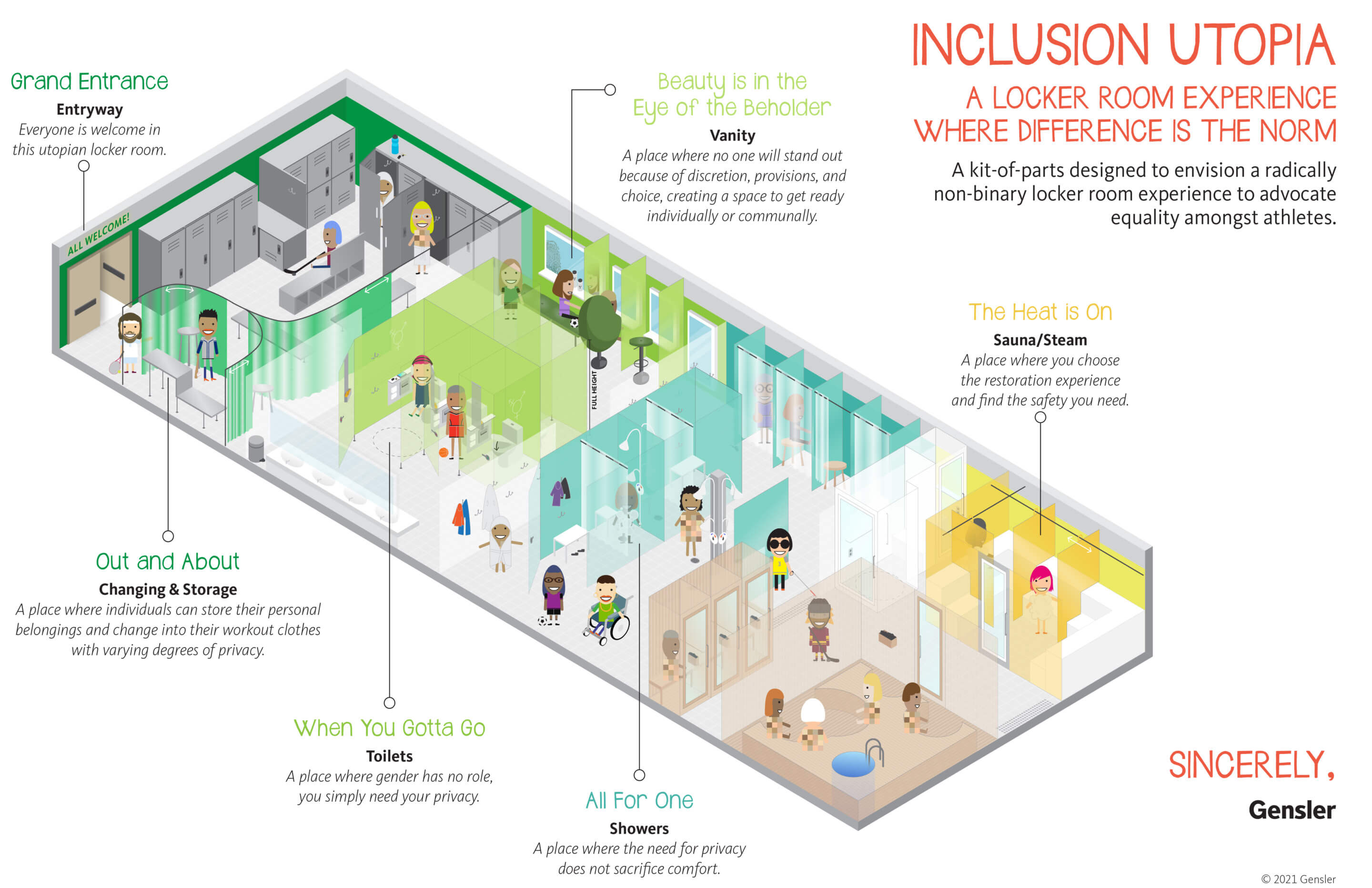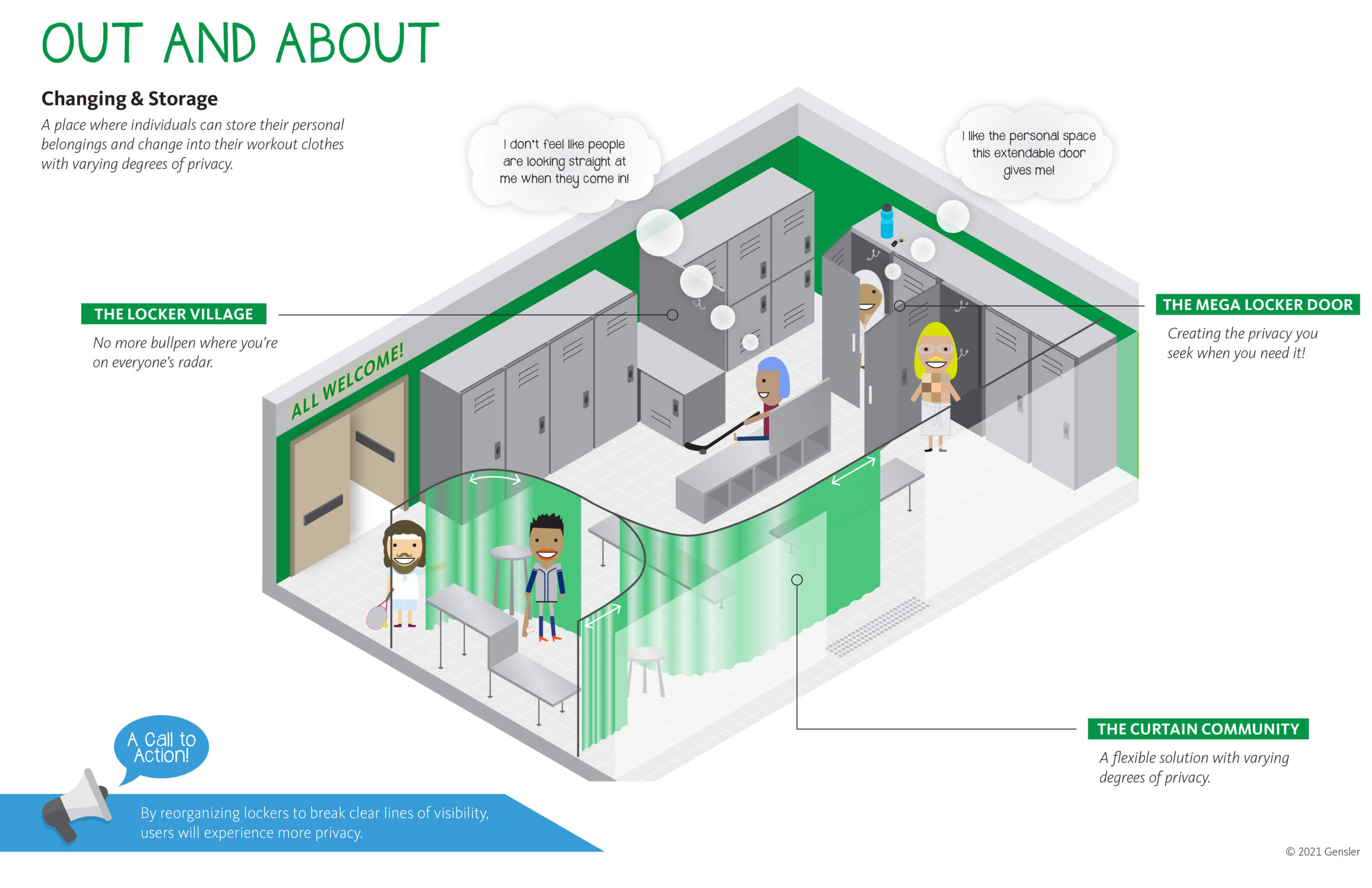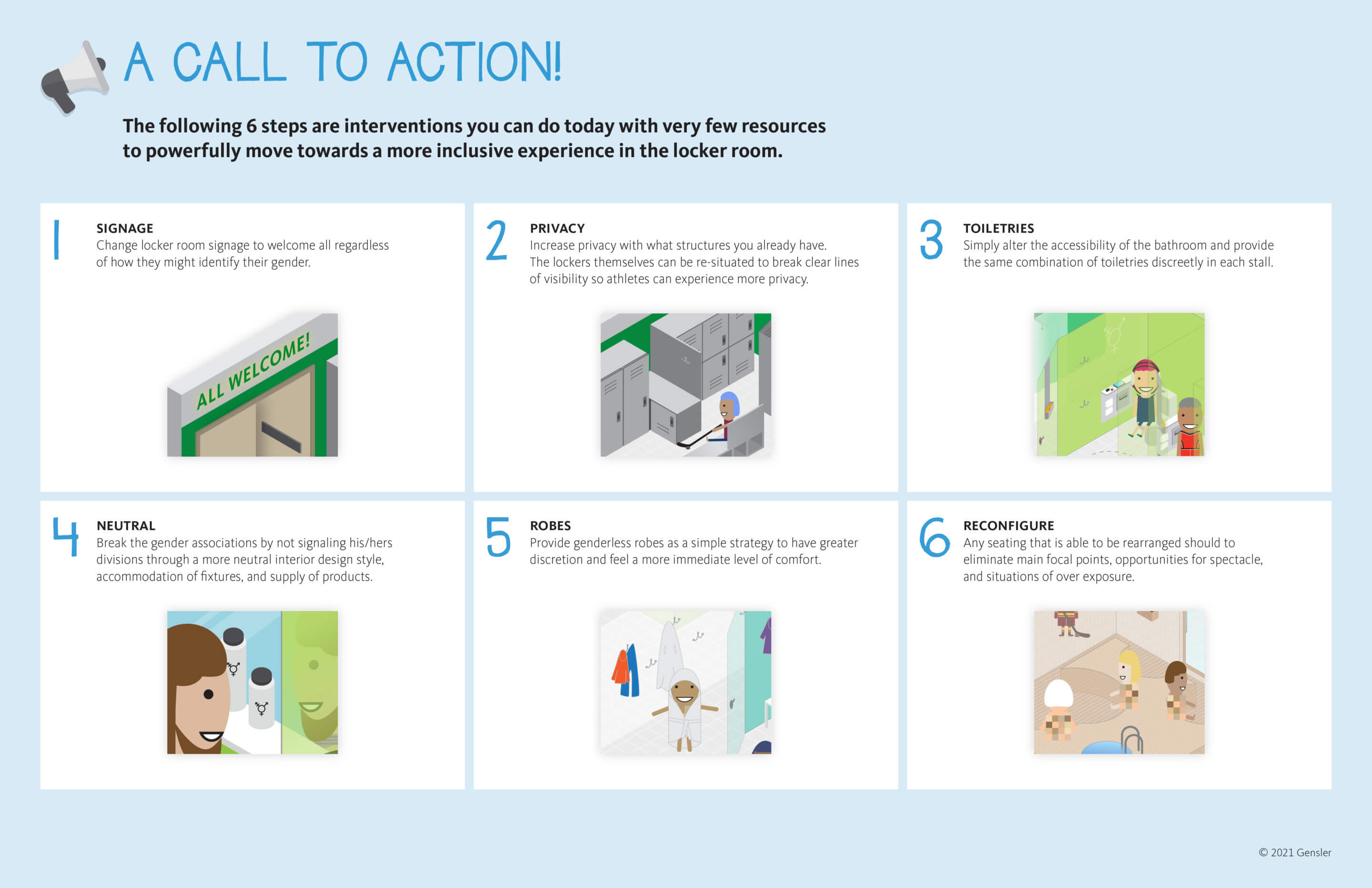Locker rooms often operate as critical access points for individuals participating in organized team sports and other physical activities. Like bathrooms, locker rooms typically offer just two options; spaces for men and women that are clearly delineated under the assumption that users will be both cisgender and heterosexual. The guiding notion is that these users are incapable of sharing spaces of non-sexualized nudity.
With the aim of imagining a more inclusive locker room experience, Gensler partnered with Athlete Ally, a nonprofit committed to championing the rights of the LGBTQI+ community and ending homophobia and transphobia in sports, to produce The Inclusion Utopia: Promoting a More Equitable and Inclusive Experience for Athletes. The article was co-authored by Santiago Rivera, Northeast regional leader of Gensler’s Foundations, Associations and Organizations practice, and Amanda Ramos, Gensler’s Innovation Director. AN spoke with Rivera to gain a better understanding of the project.
For transgender and non-binary individuals, the experience of using locker rooms can be particularly ostracizing. Rivera and Ramos wrote that “non-binary and trans athletes are continuously forced to make decisions on how to use a space that doesn’t align with their identity. Athletes can be at their most vulnerable state in a locker room, a space that may not offer the safety they need and can be excluded from the team dynamics.”

Though the contentious debate surrounding bathrooms and locker rooms has in recent years coalesced around the rights of transgender and non-binary individuals—on August 3, the Human Rights Campaign filed a federal lawsuit against Tennessee for passing bills that discriminated against transgender individuals’ bathroom use—the debate over public bathroom access, and by extension, locker room access, has long been suffused with Americans’ larger anxieties around changing social norms.
Historically, bathrooms have been at the center of civil rights battles. In the Jim Crow era, Black people were banned from “whites only” bathrooms. In the 1970s, opponents to the Equal Rights Amendment argued that equality between men and women would ultimately lead to sex-integrated bathrooms, places where women might be attacked by men. Until the Americans with Disabilities Act was signed into law in 1990, individuals with disabilities were not guaranteed access to public bathrooms.
There is no evidence of a correlation between gender-inclusive policies and incidents of increased harassment, but those who have attempted to pass measures prohibiting individuals from using lockers and bathrooms that correspond with their gender identity—so-called “bathroom bills”— continue to express concerns over risks to public safety. They have claimed that men and teenage boys might don dresses to sneak into bathrooms and prey on women and young girls.
With bathrooms and locker rooms such heated topics in the country’s culture wars, making a one-size-fits-all design solution unlikely. In their concept of the locker room experience, Gensler emphasizes the importance of a social contract promoting respect. Athletes would be offered a diverse assortment of spaces with varying degrees of privacy, and their preferences would be protected from the judgment of others.

Rivera told AN that, “The idea of choice was very important. Dictating that there’s one solution for every individual using the space would not have achieved what we were trying to do.” In the Inclusion Utopia diagrams, design implementations that allowed for customizing the level of privacy included full-height partitions for the bathroom stalls that prevented peeking, extendable locker room doors that could be pulled out to create a cubicle-like space, adjustable curtains, combined shower and dressing areas, and partitioned saunas.
Also depicted were thought bubbles containing what users might be thinking. The bubbles conveyed statements such as, “I love feeling totally safe while I work on my makeup with no judgment,” “I feel most safe in an open setting,” and “I don’t feel like people are looking straight at me when they come in.” Initial conversations with athletes and managers from Athlete Ally’s network had informed Gensler’s design approach, and it seems the team kept in mind the needs of their prospective end-users throughout the entirety of the design exercise. The words in the bubbles reinforced the culture of respect the Inclusion Utopia is meant to uphold.

The exercise ultimately led to the development of a kit-of-parts designed to assist institutions with the design of more inclusive spaces, and Rivera expressed that all organizations needed to determine for themselves how far they could push inclusivity in their common spaces. He said that “What inclusiveness can do for integrated design is make the experience less jarring. The utopia itself may not be within full reach today, but we can work towards implementing design that promotes equity and safety.” Gensler acknowledged some solutions may require larger interventions, but they also outlined steps that could be implemented now with relative ease, including updating signage, rearranging existing structures to increase privacy and limit sightlines, and offering genderless robes and the same toiletries in every stall.
In 2018, a non-binary individual who had intended on using the pool was removed from the women’s locker room by a staff member at a YMCA in Brooklyn. The following week, the incident repeated itself; this time the individual was removed from a family locker room by a different staff member. Though New York City has had laws enacted, since 2002, prohibiting discrimination against “an individual on the basis of gender identity or expression, including denying access to bathrooms,” the implementation of these policies is often inconsistent and subject to human interpretation and error. Instances such as these reveal how effective spatial design can help to promote inclusiveness and support policies that are already in place, alleviating the need for enforcement and intervention that can so easily entail harassment and discrimination.
In their mission statement, Athlete Ally asserts that “Sports remains one of the greatest socialization mechanisms in the world…And yet, an entire community of people remain systematically excluded from sport.” More inclusive design approaches could help to ensure that rather than precluding participation in sports and other physical activities, locker rooms can be welcoming places that promote equality and help to foster a sense of community.











